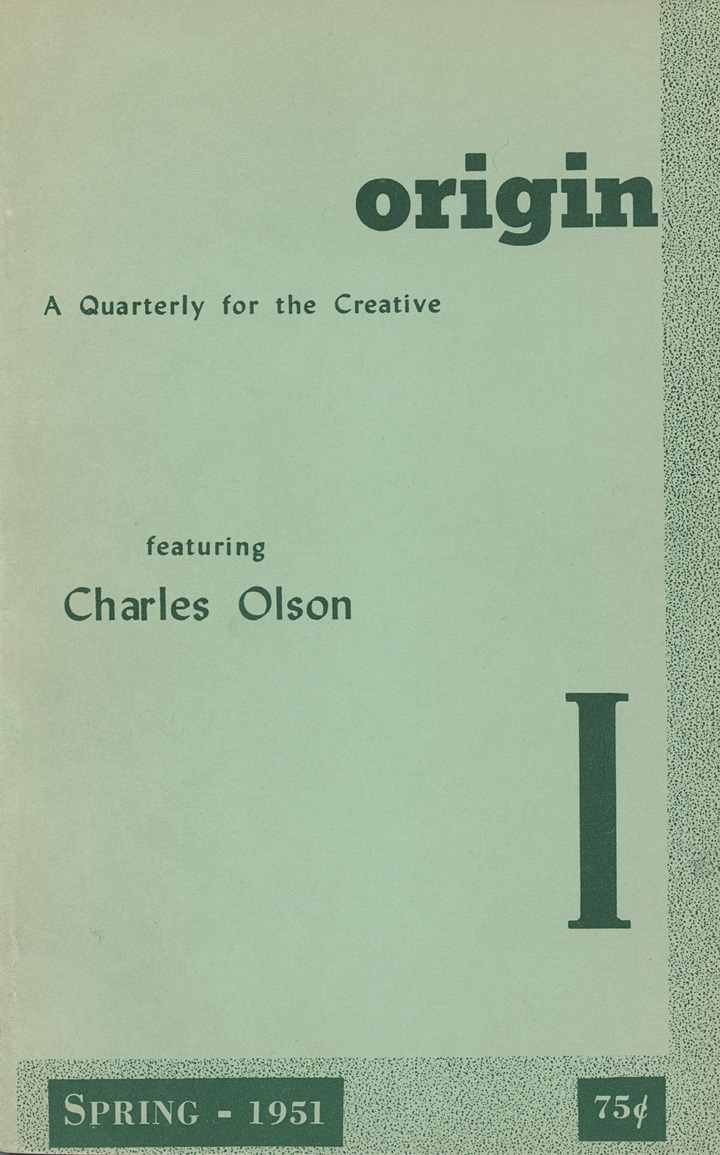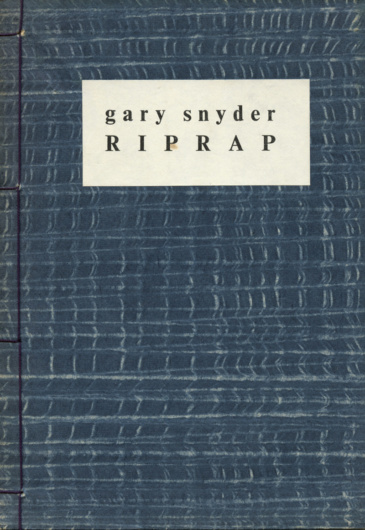Origin
Cid Corman
Dorchester, Boston, and Ashland, Massachusetts; Orono, Maine; and Kyoto, Japan
Nos. 1–20 (Spring 1951–Winter 1957); second series, nos. 1–14 (April 1961–July 1964); third series, nos. 1–20 (April 1966–1971); fourth series, nos. 1–20 (October 1977–July 1982); fifth series, nos. 1–4 (Fall 1983–Fall 1984).
First series published from Dorchester, Mass.; second and third series from Kyoto, Japan; fourth series from Boston; fifth series from Orono, Maine.
Origin 1 (1951).

Around 1950, while living in New Hampshire, Robert Creeley abandoned plans for his yet-to-be-launched little magazine. Among the material he had already gathered was work from poet Cid Corman, who was then hosting a weekly radio show in Boston entitled “This Is Poetry.” Corman expressed his disappointment over the loss of the magazine to a listener, one Evelyn Shoolman, who responded by offering to back Corman in a magazine of his own if he wished. Thus began Origin: A Quarterly for the Creative. Material gathered by Creeley along with work brought in by Corman helped to establish, in Creeley’s words, “a Place defined by our own activity.” The first issue featured a major section of work by Charles Olson, then barely published, and established the presence of an important magazine for new writing. As Olson wrote to Corman, Origin gave him “the fullest satisfaction i have ever had from print, lad, the fullest. And i am so damned moved by yr push, pertinence, accuracy, taste, that it is wholly inadequate to say thanks.” The second issue featured Robert Creeley. Origin published a wide range of writers working in poetry and prose—contributions to the first series of issues included work by Paul Blackburn, Robert Duncan, Ed Dorn, Margaret Avison, Denise Levertov, Theodore Enslin, Larry Eigner, Irving Layton, William Bronk, William Carlos Williams, Wallace Stevens, and Gael Turnbull, and translations of Antonin Artaud, Gottfried Benn, Federico García Lorca, Henri Michaux, and Giuseppe Ungaretti, among many others. The possibilities for writing explored and enacted in the pages of Origin exerted considerable influence in the postwar literary scene—indeed, as Paul Blackburn wrote in the early 1960s, “Origin and The Black Mountain Review: What other solid ground was there in the last decade?”

Gary Snyder, Riprap (1959).
Origin Press books include
Bronk, William. Light and Dark and Dark. 1956. Illustrations by Ryohei Tanaka.
Corman, Cid. Cool Gong. 1959.
Corman, Cid. The Descent from Daimonji. 1959.
Corman, Cid. For Good. 1964.
Corman, Cid. For Instance. 1962.
Corman, Cid. Hearth. 1968.
Corman, Cid. In Good Time. 1964.
Corman, Cid. In No Time. 1963. Illustrations by Will Peterson.
Corman, Cid. The Marches & Other Poems. 1957. Cover by Edwina Curtis.
Corman, Cid. The Responses. 1956. Cover by Stasha Halpern.
Corman, Cid. Stances and Distances. 1957. Cover by Edwina Curtis.
Corman, Cid. Sun Rock Man. 1962.
Corman, Cid. A Table in Provence. 1959. Drawings by Barnet Rubinstein.
Corman, Cid. Unless. 1975.
Enslin, Theodore. The Work Proposed. 1958.
Snyder, Gary. Riprap. 1959.
Turnbull, Gael. Bjarni Spike-Helgi’s Son and Other Poems. 1956.
Zukofsky, Louis. “A” 1–12. 1959. Essay on the poetry by the author and a final note by William Carlos Williams.
Zukofsky, Louis. It Was. 1961.

Origin 2 (Summer 1951).
Resource
For further information on Origin, the reader is referred to: Cid Corman, ed., The Gist of Origin, 1951–1971: An Anthology (New York: Grossman Publishers, 1975).
